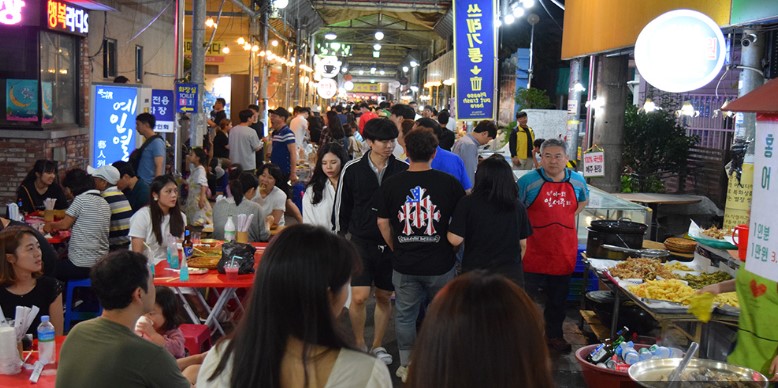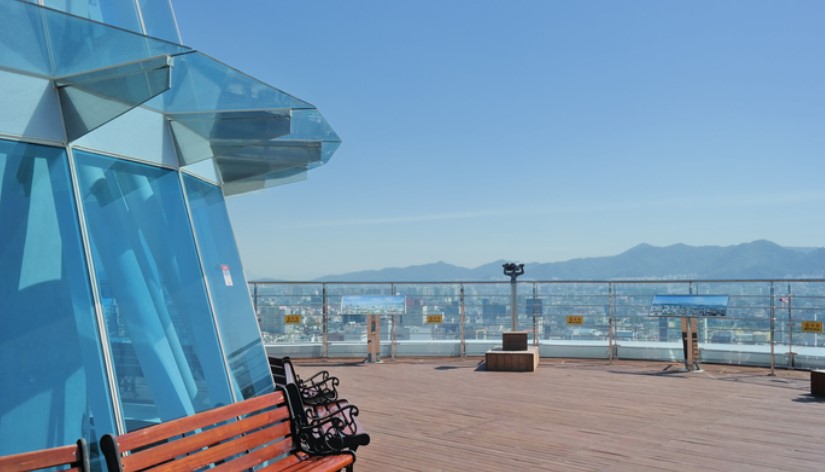A 30-Year Love Affair: How a ticketing mistake brought me to the city of the living instead of the city of the dead
By Charles Vallerand
“Why did we have to take a three-hour bus ride from Gyeongju to come to Gwangju?” asks my partner Riana. I answer: to see my friend Professor Shin again. This is the third time I’ve been here, and as you’ll see, this city holds a special place in my heart.
I first came to Gwangju 30 years ago, on the sidelines of a business trip to Seoul. As a young civil servant in the international relations section of Canada’s Department of Communications, my boss at the time asked me to replace him at a meeting of the Asia Pacific Economic Cooperation (APEC) telecommunications working group. My girlfriend at the time, now my spouse, is Indonesian. After the meeting, I took a few days off to visit Korea. It was one of my first trips to Asia, and I was really curious to discover a part of the world I knew nothing about. The only thing I knew was that my compatriot, the Canadian singer Corey Hart, was staying at the same hotel probably because he was on tour in the country. He was immensely popular around the world back then.
I wanted to visit Gyeongju, recognized by UNESCO as a world heritage site. I thought this UNESCO designation should guarantee that I would not be disappointed by my visit to the country’s ancient capital. I had been impressed by the photos of the royal tombs, which I wanted to see with my own eyes. I ended up buying a ticket for Gwangju (there are no flights to Gyeongju) and found myself stranded at Gwangju Airport late that night. As nobody spoke English, I waited for a long time before a cab driver offered, in Korean, to take me to a hostel. I slept rather badly that night on an intermittently heated tatami mat, without sheets or blankets.
I soon realized that Gwangju was a very special city in the country’s history. The student movement for democracy was still very much alive in the memory of its residents. As a university town, there were young people everywhere. In the mountains, along the paths, I came across people meditating, others doing their morning stretches, Buddhist temples, Japanese bunkers… The view of the city was magnificent (it was much more modest than today). At lunchtime, I stopped off at a popular eatery on the outskirts. The construction workers at the next table, who didn’t speak a word of English, offered me a bottle of soju. Their hospitality immediately put me at ease. Like the cab driver at the airport, they welcomed and helped me. I have fond memories of those first encounters.
I returned to Gwangju a second time at Professor Shin’s invitation in the spring of 2018 as a panelist at a conference on the Fourth Industrial Revolution. He had arranged for us to stay at a hanok, which went along well with my interest in arts and culture. Him and I had met the year before in Jeju at the Culture Summit organized by the international organization United Cities and Local Governments (UCLG). The city of Gwangju had already changed. The Asian Cultural Center had been open for a few years. Research on Asian identity was being carried out with the aim of promoting intercultural dialogue. Gwangju had been designated a Creative City for Media Arts by UNESCO. Some 180 photonics companies, members of the CREE LED products program, were conducting R&D on image projection products such as LCD TV screens. I remember we were presented with a K-pop show in holographic projection. The very beginnings of virtual and augmented reality. Gwangju kept playing its role as a guardian of human rights and democracy. Dr. Shin recounted the tragic events of May 1980 and the subsequent changes in the country with an intense gaze. He would also show us the city’s natural surroundings with the same pride.
My third visit to Gwangju, in April 2023, is not the result of a mistake or an invitation. I came back out of attachment and friendship. I took my wife to hike sections 4-5-6-7 and 10 of the Olle Trail, which circles Jeju-do – 100 km on foot in 5 days with a 7 kg backpack. She loved it. From Jeju-do, we spent a few days in Busan, then on to Gyeongju, which I’d been wanting to visit for 30 years. I was not disappointed. On this third visit, I’m discovering new aspects of Gwangju. The Art Street (we had a lovely time with clothes designer Pung Dang in her workspace/store), the Biennale (which we toured), Guitar Street (we had a heck of a karaoke party with members of the management team at the Chonnam National University Hospital), the central districts invaded by students in the evenings, the Daein traditional market, the Chonnam National University campus…

Gwangju hasn’t changed in its heart. It remains attached to its values. There are simply more people, more traffic, more high-rise buildings out in the distant suburbs (which we saw from the top of the Sajik Park Observatory). You can’t cross it on foot from one end to the other anymore. Distances are simply too great. Without being able to predict the future with certainty, it occurs to me that it seems inevitable that there will be strong pressure to demolish old buildings and less densely populated neighborhoods to make way for new high-rises. If it hasn’t already been done, there is a need to draw up an inventory of the heritage sites, buildings and places that need to be protected, and to adopt the necessary regulations. The “benefits” of high rises must be compared to their “costs,” considering ways to mitigate their impact on infrastructure (roads, sewage and water, nearby schools, hospitals, family shops being replaced by shopping malls…), the environment (sunlight, air quality, wind, green space, heat islands…) and citizens (sense of belonging, friendliness, communal identity…).
This last point is especially critical for the older folks, and their relatives, whose health and emotional well-being are tied to a harmonious relationship with their neighbors and surroundings. Conducting a census of the areas targeted for redevelopment should be included in the planning. Consulting citizens is a must. It can be expected that developers will offer to throw money at the problem. Local authorities should resist this “quick fix” and instead adopt a human-centered approach, as buildings and city planning should be designed to improve the human condition and not the other way around. Remember, this is a city of human rights and a beacon for the democratic movement. I’m sure the local authorities of Gyeongju should be able to provide some good advice in establishing exemplary practices for a balanced approach in the country’s future development.
The Author
Charles Vallerand is a member of the UNESCO Expert Facility of the 2005 Convention on the Protection and Promotion of the Diversity of Cultural Expressions, providing capacity-building assistance to developing countries on the governance of cultural policy and on media diversity. He is the publisher of a weekly press review “Cultures in the Digital Era” covering emerging issues and best practices for the arts and culture in Canada and internationally. Charles has more than 35 years of experience in cultural policies, public service broadcasting, and international cooperation.





